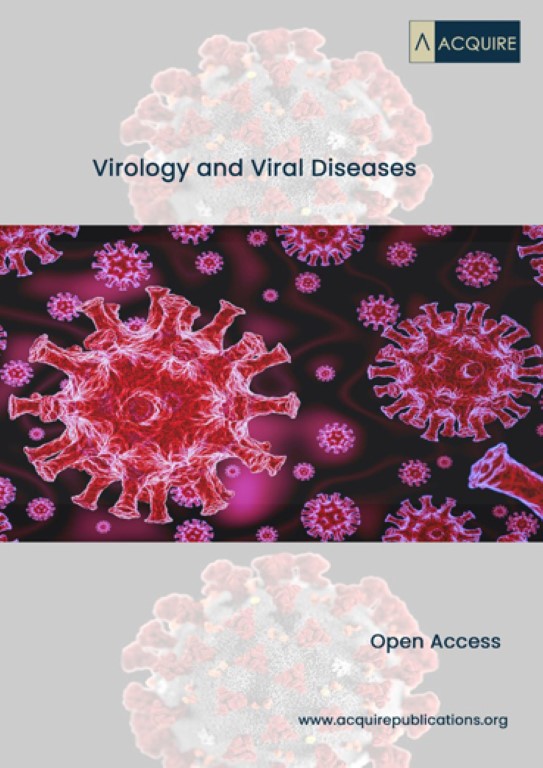>Corresponding Author : Michel Leclerc
>Article Type : Research Article
>Volume : 1 | Issue : 1
>Received Date : 23 September, 2021
>Accepted Date : 8 October, 2021
>Published Date : 11 October, 2021
>DOI : https://doi.org/10.54289/JVVD2100102
>Citation : Leclerc M (2021) Comparisons Between 3 Invertebrates Igkappa Genes : From the Less Evolved to the Most One.Bioinformatic Data. J Virol Viral Dis 1(1). doi https://doi.org/10.54289/JVVD2100102
>Copyright : © 2021 Leclerc M. This is an open-access article distributed under the terms of the Creative Commons Attribution License, which permits unrestricted use, distribution, and reproduction in any medium, provided the original author and source are credited.
Research Article | Open Access
Immunology of Invertebrates, Department of Biology -Biochemistry, Orléans University, France
*Corresponding author: Michel Leclerc, Immunology of Invertebrates, Department of Biology -Biochemistry, Orléans University, France
Abstract
We attempt to establish, in the present paper, comparisons between 3 classes of Echinodermata (Asterids, Ophuirids, Crinoïds) out of 5 classes, at the level of genomes.
Mainly we compare the IGKappa genes of these 3 classes which belong to Invertebrates.
The Ophuirid IGKappa gene from Ophiocomina nigra seems to be the most evolved, in terms of immune functions, when compared to the two other ones.
Keywords: Invertebrates; Echinodermata; Immunoglobulins; Evolution
Introduction:
We recall that biosynthesis of 3 IGKappa genes have been performed [1, 2, 3].They belong to Echinodermata, first Asterids with Asterias rubens as a model of study in 2014, second Ophuirids (Ophiocomina nigra) and Crinoïds (Antedon bifida) in 2021 [2, 3].
We try now to compare them.
Methods:
We performed bioinformatic assays according to the method of Marchler-Bauer [4,5] (by the use of various blasts directed against Vertebrate IG genes).
Results:
1) Antedon bifida (Crinoïds)
BlastP of the two predicted amino acids sequences.
Conserved domains on:
2) Asterias rubens: Two region features as shown below (Fig.1)
Fig.1. Predicted: Asterias rubens uncharacterized LOC117296905 (LOC117296905)
Two region features:
a. Region Ig
Comment: Immunoglobulin
Location: 47…151
Length: 105 aa
CDD: 214652
b. COG5644
Comment: U3 small nucleolar RNA-associated protein 14 (function unknown)
Location: 731…866
Length: 136 aa
CDD: 227931
3) Ophiocomina nigra:2 Immunoglobulin domains as seen below (Fig.2)
Fig.2: IGK@ protein [Homo sapiens] graphic by NCBI [Ref.]
GenBank: AAH30813.1
The AAH30813.1 protein has two immunoglobulin domains:
c. Region 1
Region: IgV_L_kappa
Comment: Immunoglobulin (Ig) light chain, kappa type, Variable (V) domain
Location: 22…126
Length 105 aa
1. Region 2
Region: IgC_L
Comment: Immunoglobulin constant domain
Location: 132…231
Length 100 aa
Conclusion, Discussion:
As previously described, we observe something which recalls as an evolution between these3 Echinodermata (Invertebrates):
1)Antedon bifida (Crinoïds)
2)Asterias rubens (Asterids)
3)Ophiocomina nigra (Ophuirids)
The Antedon bifida IGKappa gene with its two predicted amino-acids sequence presents no Immunoglobulin site; the Asterias rubens IGKappa gene:1 Immunoglobulin Domain; the Ophiocomina nigra IGKappa gene: 2 Immunoglobulin Domains at the level of constant part and the variable part of Immunoglobulins (entiere homology with human IGK) [6]
At our knowledge it seems highly important to give that data in terms of emergence of Immunoglobulins in Invertebrates when compared to Vertebrates.
References
- Vincent N, Osteras M, Otten P, Leclerc M. (2014). A new gene in A. rubens: A sea star Ig kappa gene. Meta gene 2: 320-322. [Ref.]
- Leclerc M. (2021). Biosynthesis « De Novo » of the Ophuirid Ophiocomina Nigra Igkappa Gene. J Clin Class Immunol. 1(1). [Ref.]
- Leclerc M (2021) Acad J Clin Heath Rep Med Sci. [Ref.]
- Marchler-Bauer A, Lu S, Anderson JB, Chitsaz F, Derbyshire MK, et al. (2011) CDD: a Conserved Domain Database for the functional annotation of proteins. Nucleic Acid Res. 39(D): 225-229. [PubMed.]
- Marchler-Bauer A, Bo Y, Han L, He J, Lanczycki CJ, et al. (2017) CDD/SPARCLE: functional classification of proteins via subfamily domain architectures. Nucleic Acid.Res. 45(D): 200-203. [PubMed.]
- Leclerc M (2021) Genomic submitted. [Ref.]
